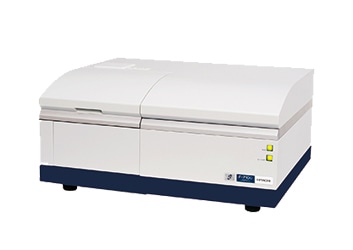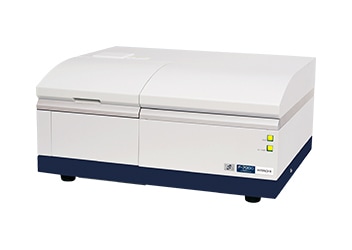What is Fluorescence Fingerprint (EEM)?
Fluorescence Phenomenon and 3-D Fluorescence Spectra (Fluorescence Fingerprint)
- A sample is irradiated with light at a variety of wavelengths, and the fluorescence emitted from the compound is observed.
- The excitation wavelength, fluorescence wavelength, and fluorescence intensity vary with the type and concentration of the compound.
- The fluorescence properties of the sample (fluorescence fingerprint) can be acquired using the 3-D fluorescence spectrum mode of the fluorophotometer.

With a fluorophotometer, a sample is irradiated with light from the UV to the visible range (200 to 900 nm), and the fluorescence emitted from the sample (200 to 900 nm) is observed.

With a fluorophotometer, after fixing the excitation wavelength and scanning for emission wavelengths, the operation of scanning for fluorescence wavelengths at the next excitation wavelength is repeated to construct 3-D fluorescence spectra.
The fluorescence from familiar samples can be confirmed. Below the autofluorescence from various components could be found in pineapple juice, river water, highlighter ink, and laundry detergent.
(Substance identifications were deduced from literature and other information.)

Products supporting this application
Contact us for more details.



